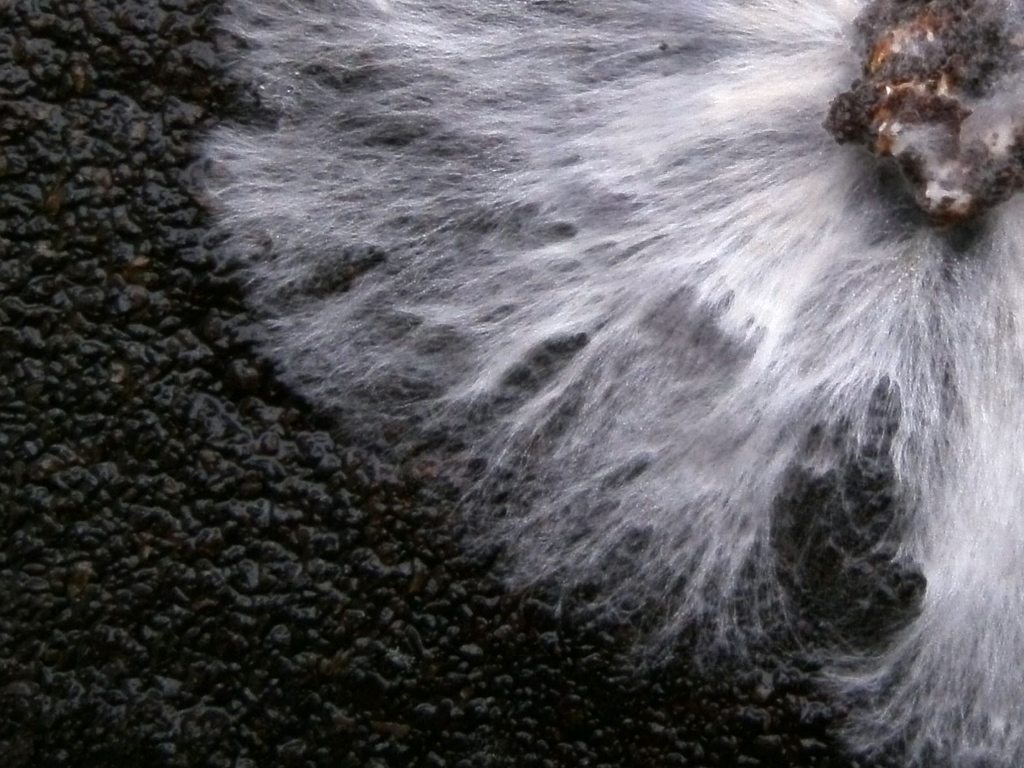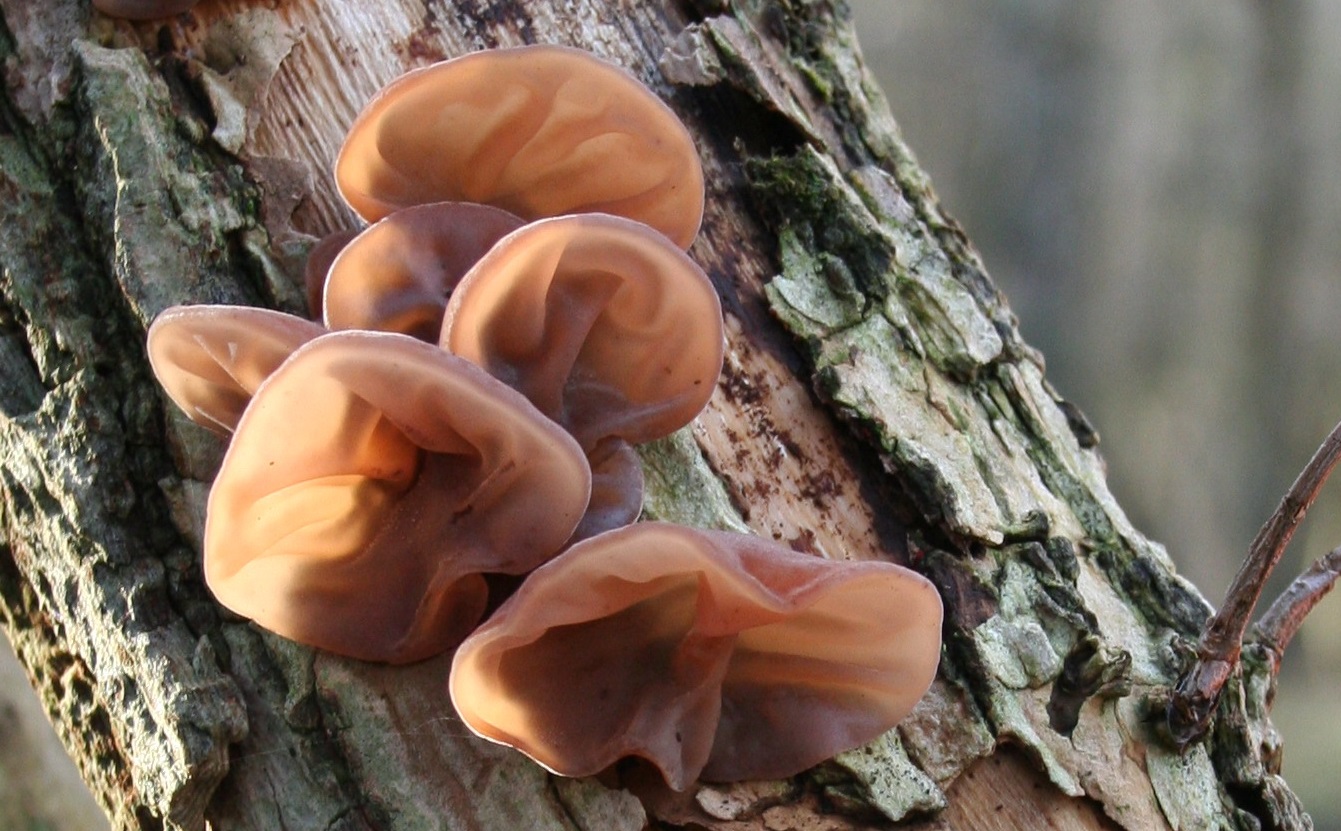Because he was a fungi!
Sorry, I had to get the groaner out of the way, as the temptation would probably be too much to bear later on.
Over the last few months I have been conducting mini fungi surveys, jotting down whatever fungal growth I’ve seen and can identify at our sites on SNCV task days. I’ve been mushroom hunting for years, but I’m certainly no expert – I used to only be interested in those I could eat!
The idea is to build up a bank of information on the species present on our sites to keep a track of our fungal diversity, as we have done with flora and fauna for many years. Hopefully, over time we will see the work of the SNCV and Biodiversity team positively affecting the diversity of fungi in the borough.
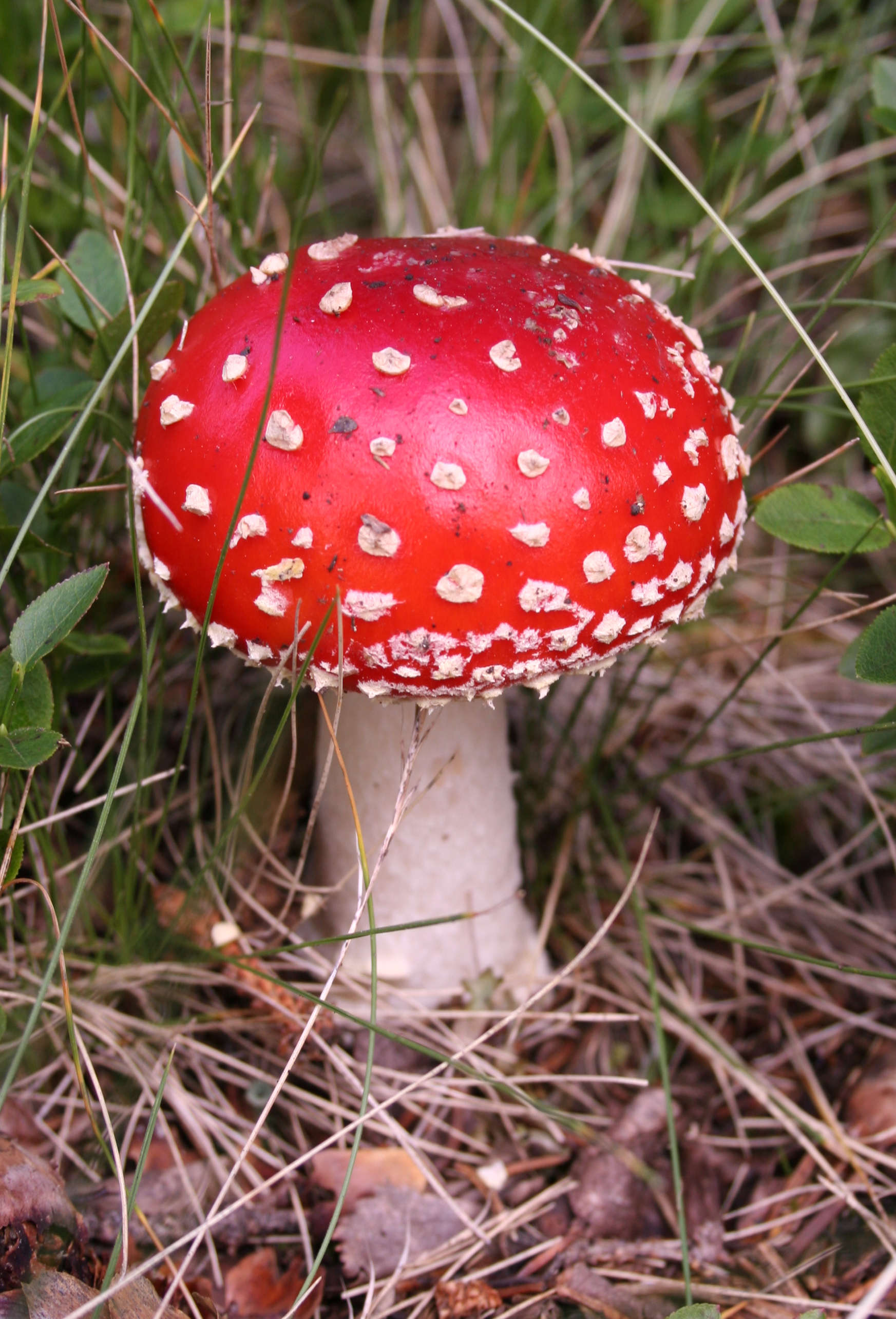
Fly Agaric (Amanita muscaria)
So, what constitutes a fungus? Some people reading this may be thinking of a mushroom, perhaps with a large red cap and white spots, much beloved by Mario. Chances are you’re thinking of something very much like the common woodland mushroom Fly Agaric (Amanita muscaria – above).
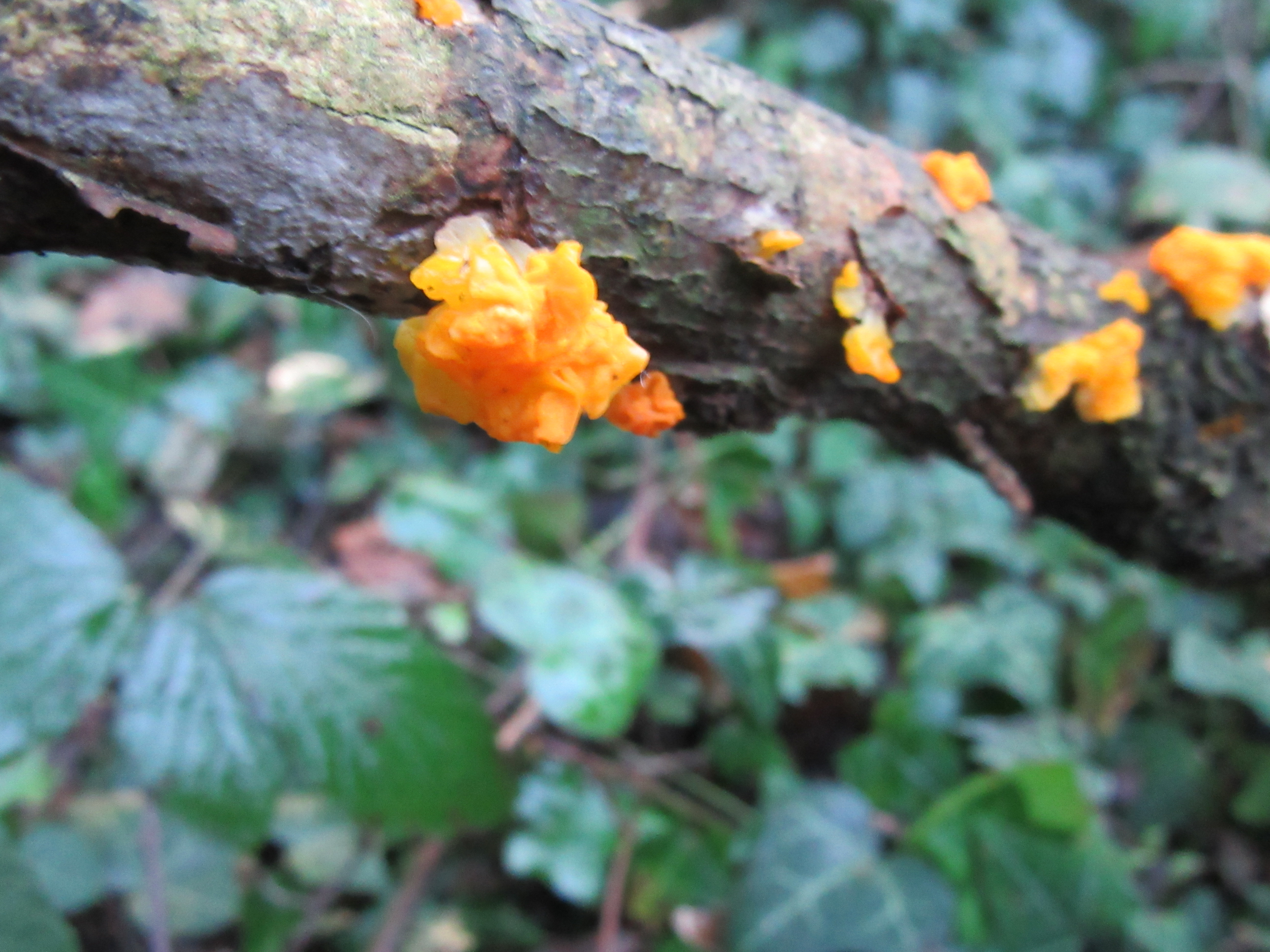
Yellow Brain Fungus (Tremella mesenterica) at Queen Mary’s Woodland
Alas, it isn’t that simple, fungi come in all shapes, sizes and colours. From classic ‘cap and stem’ mushrooms, to hard woody brackets, to jelly like blobs, to almost invisible wood rotting fungi, to tiny microbial fungi only visible through a microscope, there is an awful lot of variation in form. To make things even more confusing the lines are blurred between fungi, lichens (a symbiotic ‘multiple organism’ made up of fungus and algae) and slime moulds (which are often studied alongside fungi, despite actually being in a different taxonomic kingdom all together – they are Protists).
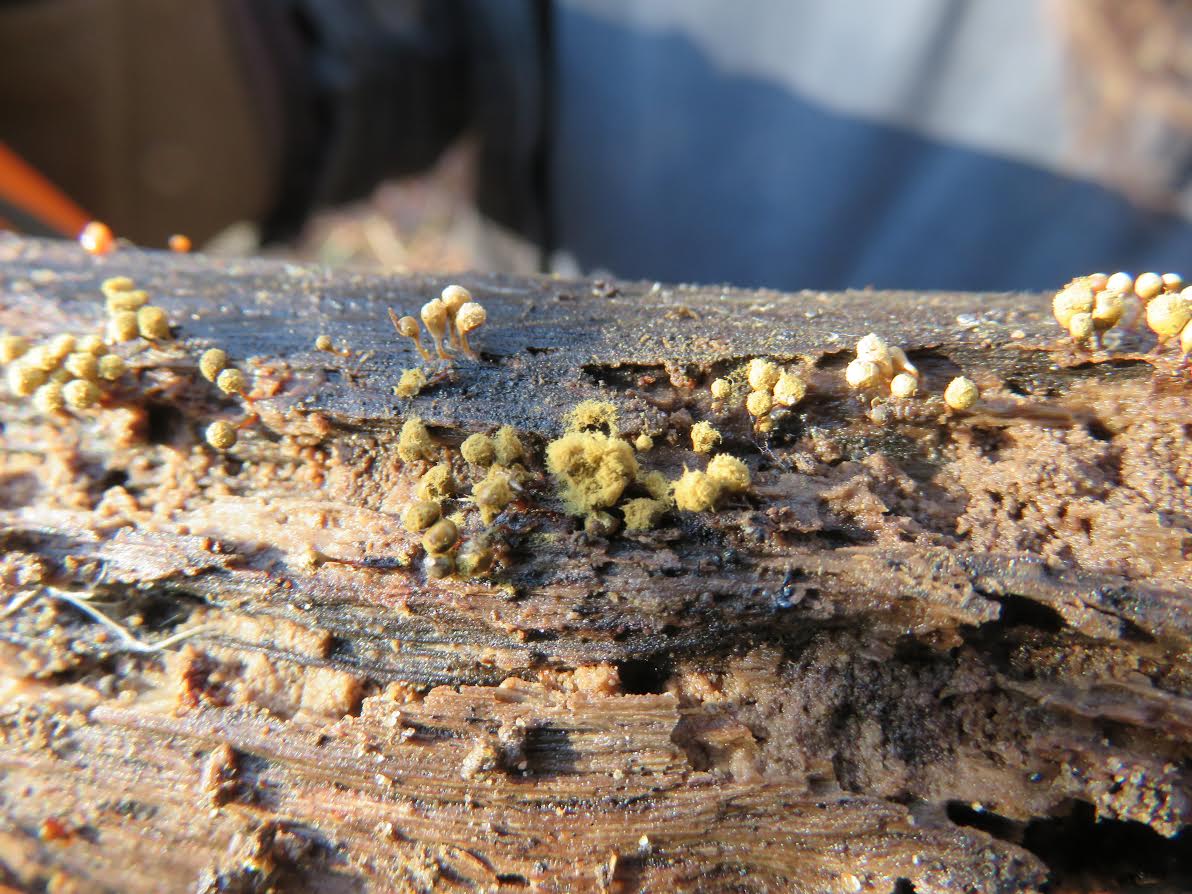
Not a fungus, a slime mold! Found at Roundshaw woods (Looks like Trichia decipiens – but not sure.)
However, even ignoring these confusions, a fungus is more than meets the eye. What we see as a mushroom, or a bracket on the side of a tree is merely the ‘fruit’ of the organism, basically a reproductive organ that allows spores to mature, be released and germinate elsewhere. These fruiting bodies are mostly quite short lived, and can appear at different times of year – or not appear at all depending on heat, rainfall and other environmental conditions. In order to accurately log species present on a site, year round surveillance is needed, so I’ve got my work cut out!
To use a slightly cheesy cliché, the fruiting body is just the tip of the iceberg. The main bulk of the fungus lives in the soil or wood substrate as a complex network of fibres called hyphae, known collectively as a mycelium. This is where some of the most important roles of fungi take place, as it is where nutrients are transferred.
Through the mycelium, fungi can break down matter and intake and excrete nutrients. For decaying or ‘saprotrophic’ fungi, this enables rotting and decomposition in organic matter such as wood, dead leaves and dung, making these fungi incredibly important for any healthy ecosystem.
While there are bacteria that can also decay organic material, fungi are known as ‘the great recyclers’. An absence of fungus would cause the world to quickly fill up with dead plant and animal matter. Being buried under trees and dead bodies isn’t a particularly pleasant thought, so hooray for the mushies breaking it all down!
It isn’t all destruction though. The fungi break down and transport materials that would otherwise be unavailable to other organisms, increasing soil fertility and balancing nutrient deposits in soil.
Many fungi, particularly cap and stem mushrooms, form symbiotic relationships with plants and animals. In plants, the fungus will absorb nutrients such as sugars from the plant’s roots and in turn release nutrients like phosphorus and water, that the plant needs to survive.
Almost all terrestrial plants have been known to build these relationships with fungi, intertwining roots and mycelium. These mutually beneficial relationships are known as mycorrhizae, and are vitally important to the survival of many plants. Many orchids, for instance, cannot germinate at all without receiving nutrients from a fungal partner, and all orchids form mycorrhizal relationships at some point in their life cycle.
So fungi is both responsible for promoting plant growth, and plant decomposition – like a bizarre doting yet cannibalistic mother.
Of course, the mushrooms, toadstools and bracket-like fruiting bodies of fungi are an invaluable food source not only for us humans, but for a whole host of fungivore animals including mammals, molluscs and insects. Some insects such as fungal gnats (Mycetophilidae) use certain types of fungus as their larval host and main food source.
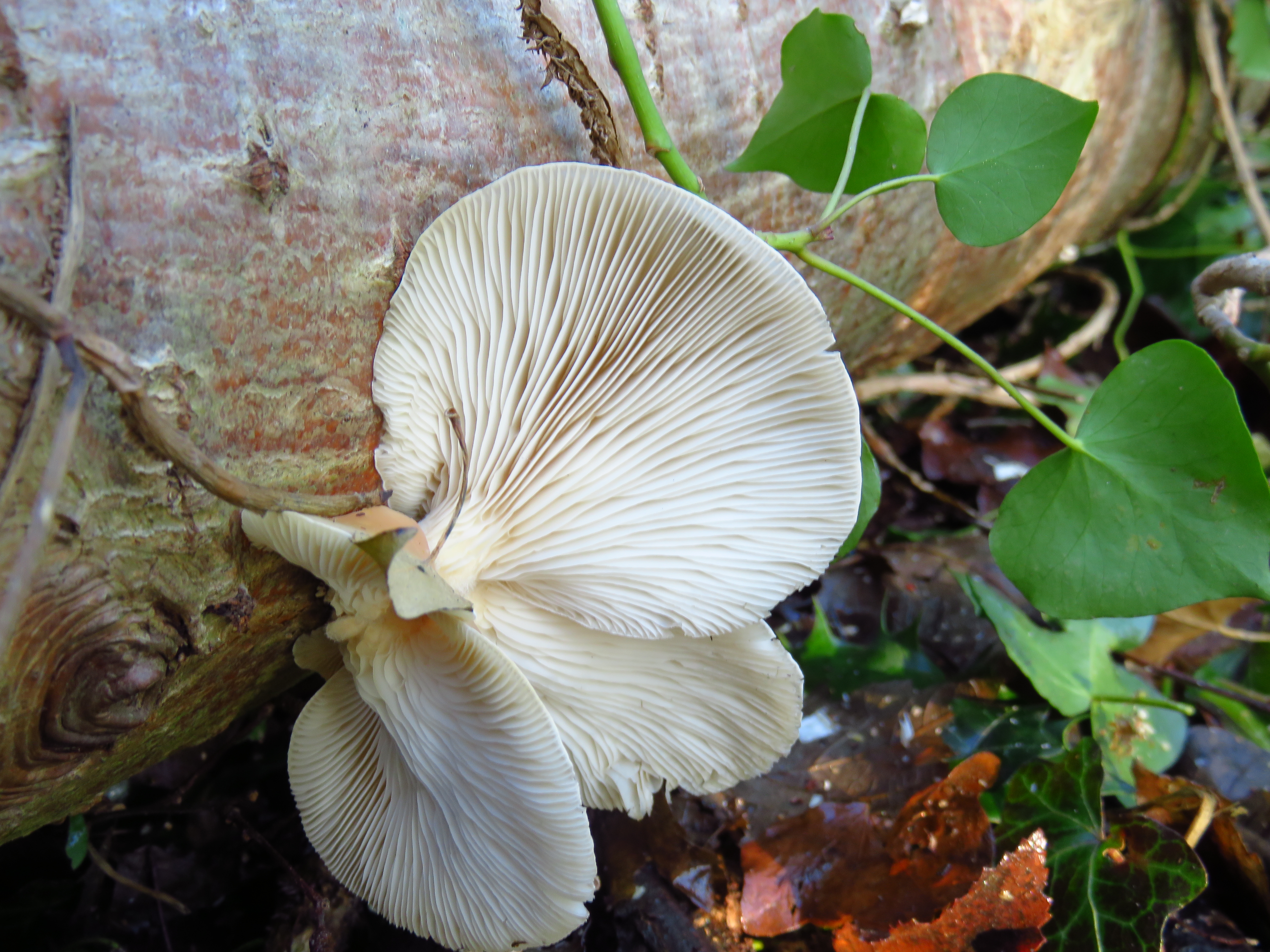
Oyster mushrooms (Pleurotus ostreatus) growing on birch at Queen Mary’s Woodland. – Yum!
Unfortunately, despite their many beautiful forms and myriad ecological uses, the kingdom fungi is still not regarded with the same gravitas as animals and plants. In fact, it’s only relatively recently that fungi was formally recognised as it’s own taxonomic kingdom, finally being split from plants in 1969.
Fungi have had a bad press in general, too. With people assuming all toadstools are poisonous, or eradicating fungi from their gardens for ruining their lawns (to be fair, some fungi is incredibly poisonous, and some can cause widespread problems like food shortages by infecting crops – but I’m hardly going to mention that in a pro-fungi post, am I?). And the number of times my mere mention of fungi has caused people to collapse into a fervour of nudging, winking and cracking jokes about hippies is ridiculous.
Attitudes are changing, though. Over the past few decades, as ecology and biodiversity have by necessity become more widely discussed, so too has interest in fungal diversity increased.
Organisations such as the British Mycological Society and Plantlife along with local fungi groups and larger groups worldwide have long been encouraging awareness of fungi and educating people about their vital roles in our ecosystems. Due to these efforts people are starting to appreciate the beauty and importance of these organisms, with various species being identified as priority at risk species by the UK Biodiversity Action Plan and via the IUCN’s RED list. There are even protected species of fungi and lichen covered by law in the UK’s Wildlife and Countryside Act (even though they’re still bunged in with the plants – but you can’t have everything).
So far I have found many very common, almost ubiquitous species on all the sites that I have checked, plus a handful of unusual types that were new to me. One of the joys of these searches is finding something bizarre or beautiful but very common, like Jelly Ear (Auricularia auricula-judae, above) or Dead Man’s Fingers (Xylaria polymorpha) and seeing other volunteers regard them with wonder as I did when I first found them.
A sentiment that I found true when I first became interested in fungi and one that I hear echoed every time I show someone something new is that once you open your eyes to the world of fungi, there’s a heck of a lot to see.
I hope this little introduction has done something to get people interested in fungi in the London Borough of Sutton – I’ll be sure to update you all on what I find in the coming months.
Thanks for reading, now go and find some fungi!
Adam (Biodiversity Assistant)


